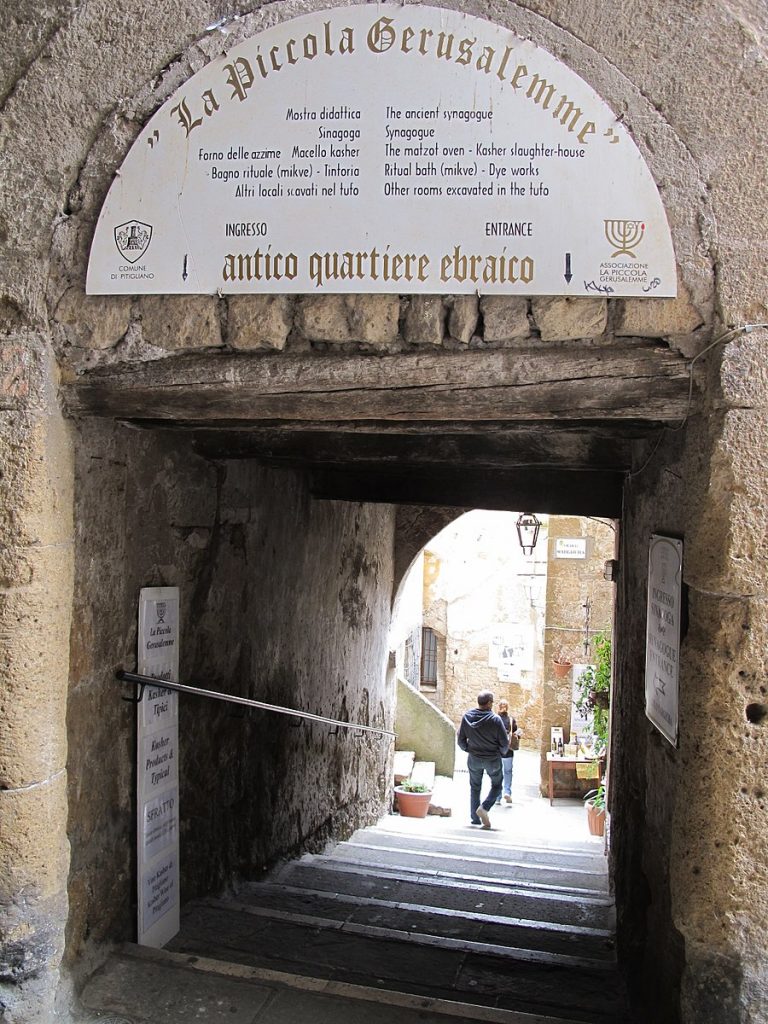Located at the extreme south of Tuscany among the hills and cypresses, the borough of Pitigliano rises from a rocky pinnacle. Once called “little Jerusalem” by Tuscan Jews, the nickname points to the historical importance of Pitigliano’s Jewish community here, formed by those fleeing the Papal States after the edicts of 1555.

The Jews remained here for almost four centuries, formally occupying a ghetto after 1622, but trading or even farming in almost perfect tranquility. This calm was interrupted, however, in 1799 by anti-French violence subsequently directed at the Jews, who, with their new ideas, were accused of being in sympathy with the French. Of the 3189 residents registered in the town census of 1841, 359, or roughly 10%, were Jewish. After the emancipation in 1859, the Jews in Pitigliano stayed until the beginning of the twentieth century, their positive sentiments evident in the custom of naming their children Garibaldi or Mazzini, names of the heroes of Italian reunification. Eventually many residents departed for Florence or the capital and the community languished.
The best white kosher wine in Italy and an ancient synagogue are among the remains of the Jewish community in Pitigliano. The synagogue, which dates from the sixteenth century and was last remodeled in the eighteenth century, was crumbling by the 1960s. Restored and reopened in 1995, it stands in the former Jewish quarter at the foot of the Orsini Castle beside the former bread oven. Only one wall of the synagogue, that of the women’s gallery, has remained intact. The rest of the synagogue has ben carefully reconstructed with the gilt stucco, holy inscriptions in Hebrew, and plaques commemorating the visit of the grand dukes Ferdinand III and Leopold II to the temple at the beginning of the nineteenth century.